Mobile Fitness Business Guide (2025)
Learn how to start a mobile fitness business with our step-by-step mobile fitness business guide.

Starting a mobile fitness business can be an exciting and rewarding venture. Not only does it allow you to take your passion for fitness on the road, but it also provides the opportunity to reach a wider audience and offer personalized services to clients in the comfort of their own homes or preferred outdoor locations. In this comprehensive guide, we will explore the various aspects of running a successful mobile fitness business, from the benefits to the challenges and everything in between.

Learn how to start a mobile personal training business and learn how to start a mobile gym business with various fitness equipment and other requirements. Find out which mobile fitness business model is best for your goals. Discover how to start and grow a successful mobile fitness business with our comprehensive guide.

And then, of course, here at Exercise.com, we understand the importance of having a solid software partner for running and growing your mobile fitness business. That’s why we offer the best gym management software and the best personal training software solutions to help you streamline your operations and supercharge your mobile fitness business marketing efforts.
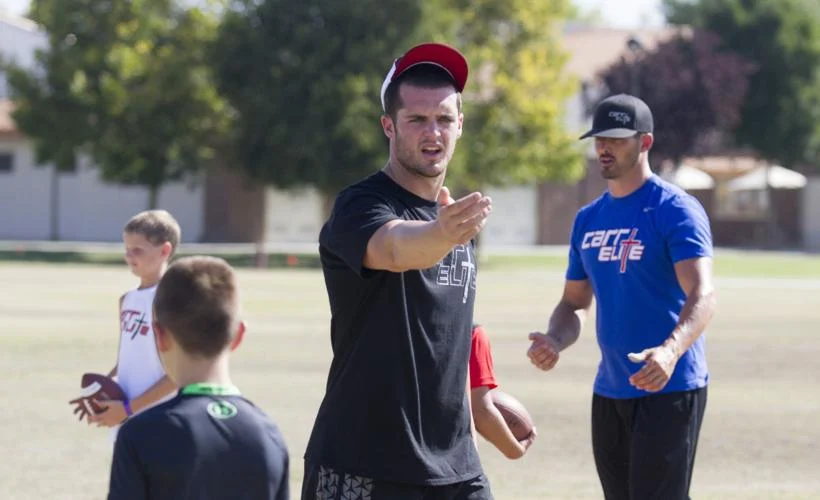
How to Start a Mobile Fitness Business: 10 Steps

Starting a mobile fitness business can provide a flexible and lucrative career option for fitness enthusiasts who enjoy the freedom of working outside a traditional gym setting. This guide will provide you with a step-by-step process to establish your mobile fitness business successfully.
Step 1: Define Your Business Concept
Identify what type of fitness services you plan on offering (personal training, group classes, specialty classes, etc.) and who your target audience is.
Step 2: Create a Business Plan
Outline the operations, marketing strategy, and financial projections of your mobile fitness business. This should include your business model, target market, pricing strategy, and how you plan to attract and retain clients.
Step 3: Obtain Certification
Make sure you’re a certified fitness trainer. If you plan to offer specialized services like yoga or pilates, you may need additional certifications.
Step 4: Legalize Your Business
Register your business with the appropriate government bodies, and make sure you have all the necessary licenses and permits. You’ll also need to get liability insurance to protect your business.
Step 5: Invest in Equipment
Based on the services you plan to offer, invest in portable, high-quality fitness equipment. Consider the storage and transportation of your equipment as well.
Step 6: Use Exercise.com Platform
Use Exercise.com software to handle scheduling, payment processing, client communication, and workout plans. This will save you administrative time and allow you to focus more on training clients.
Step 7: Develop Your Brand
Create a brand name and logo that reflects your business. Consider setting up a professional website and social media profiles to promote your services.
Step 8: Marketing
Promote your business through various channels – social media, local events, networking, referrals, and online advertising. Offering introductory rates or referral discounts can also attract new clients.
Step 9: Provide Excellent Service
Your success in the mobile fitness business will largely depend on the quality of service you provide. Always be professional, punctual, and prepared for each session.
Step 10: Seek Feedback and Refine
Regularly seek feedback from your clients to improve your services. Be prepared to refine your business model as you grow and the market changes.
The Benefits of Starting a Mobile Fitness Business
One of the primary advantages of launching a mobile fitness business is the flexibility it offers. Unlike a traditional brick-and-mortar gym or fitness studio, a mobile fitness business allows you to set your own schedule and work with clients at times that are most convenient for both parties. This flexibility not only enables you to cater to individuals with busy schedules but also enhances your work-life balance.
Furthermore, a mobile fitness business eliminates the need for expensive rent and overhead costs associated with a physical location. This can significantly reduce your initial investment and increase your profitability. Additionally, by taking your fitness services directly to your clients, you are able to provide a more personalized and tailored experience, enhancing customer satisfaction and loyalty.
Another advantage of a mobile fitness business is the ability to serve a wider geographical area. Instead of being limited to a single location, you can travel to different neighborhoods, cities, or even offer services in rural areas where fitness facilities may be scarce. By offering convenience and accessibility, you can attract a diverse range of clients and stand out in a competitive market.
How to Choose the Right Fitness Equipment for Your Mobile Business
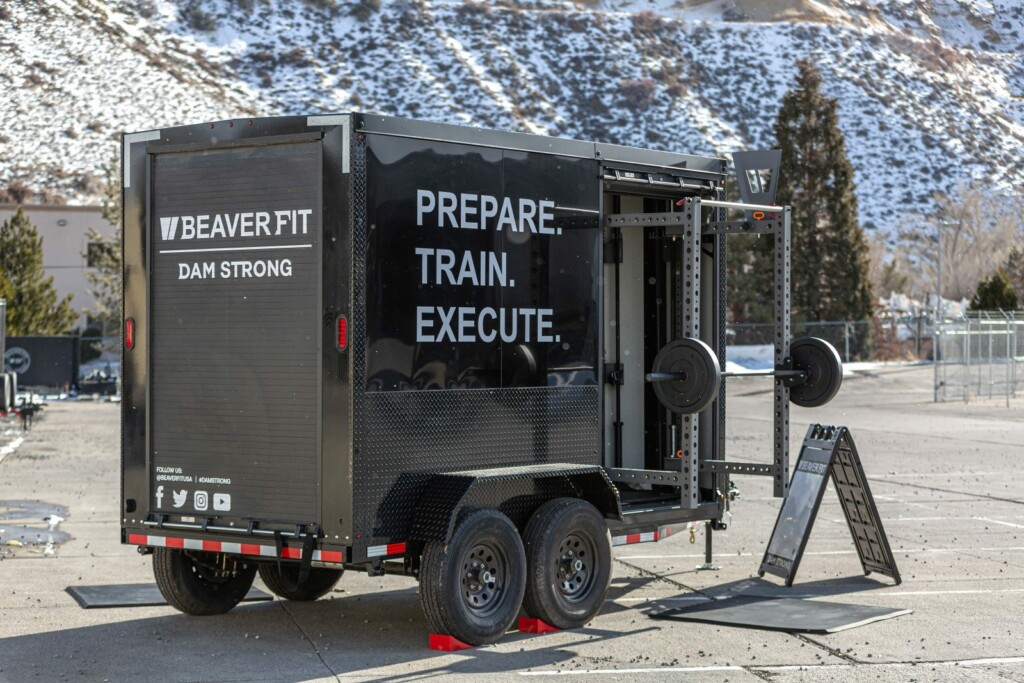
When it comes to a mobile fitness business, selecting the right equipment is crucial. Since you will be moving from one location to another, it’s essential to invest in portable and versatile fitness equipment. Lightweight dumbbells, resistance bands, yoga mats, jump ropes, and stability balls are just a few examples of equipment that can easily be transported and used in different environments.
Consider the specific services you plan to offer and tailor your equipment selection accordingly. For example, if you plan to focus on outdoor bootcamp classes, investing in items such as cones, agility ladders, and battle ropes can help diversify your workouts. Additionally, portable audio systems and music players can enhance the atmosphere of your sessions and create a more engaging experience for your clients.
When purchasing equipment, prioritize quality and durability. Since your equipment will be frequently transported and subjected to various conditions, it’s important to choose items that can withstand wear and tear. Conduct thorough research, read reviews, and consider investing in equipment that comes with warranties to ensure longevity and minimize replacement costs.
Read More: How to Start a Fitness Bootcamp Business
Building Your Client Base: Effective Marketing Strategies for Mobile Fitness Businesses
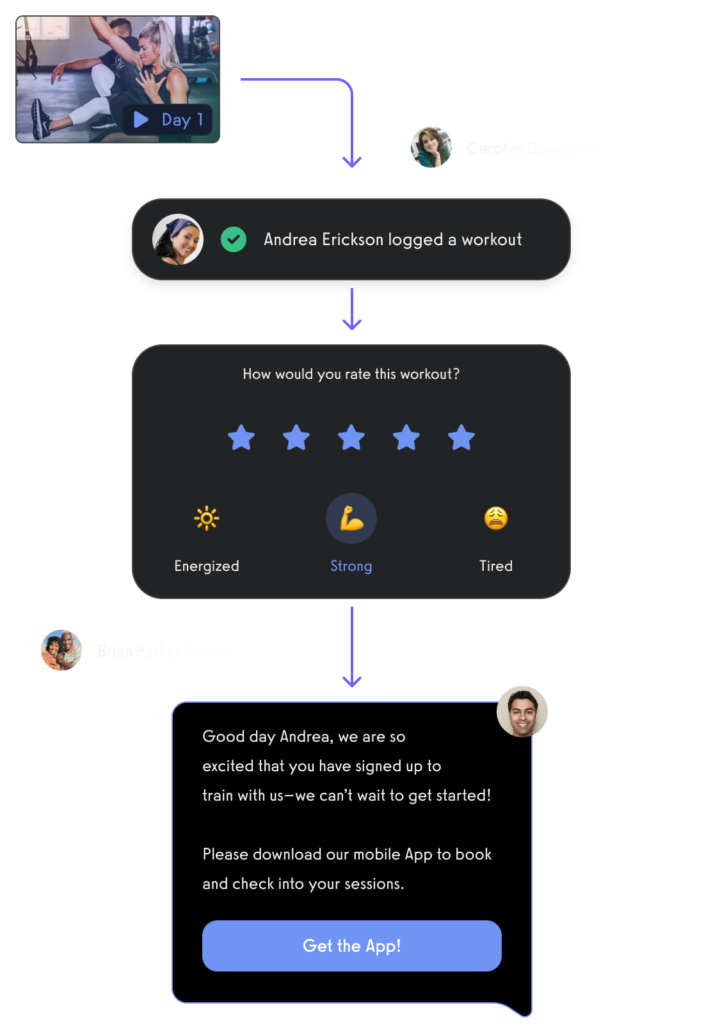
Building a solid client base is essential for the success of your mobile fitness business. Without clients, it’s challenging to generate revenue and sustain your business in the long run. To attract and retain clients, it’s crucial to implement effective marketing strategies.
One of the most effective ways to market your mobile fitness business is through word-of-mouth recommendations. Encourage your existing clients to refer their friends, family members, and colleagues to your services. Offering referral incentives, such as discounts or free sessions, can motivate your clients to spread the word and help you expand your client base.
In addition to word-of-mouth marketing, establishing a strong online presence is essential in today’s digital age. Create a professional website that showcases your services, highlights your qualifications and experience, and includes client testimonials. Utilize social media platforms such as Instagram and Facebook to share engaging content, provide fitness tips, and promote your services. By consistently offering valuable and relevant content, you can attract potential clients and build credibility in the industry.
Partnering with local businesses, such as wellness centers, health food stores, and sports shops, can also be an effective marketing strategy. Offer to provide complimentary fitness demonstrations, workshops, or guest appearances to attract potential clients who may be interested in your services. This collaboration can not only expand your reach but also establish valuable connections within the community.
Essential Tools and Resources for Running a Successful Mobile Fitness Business

To ensure the smooth operation of your mobile fitness business, it’s crucial to have the right tools and resources at your disposal. These include both physical and digital elements that contribute to the efficiency and professionalism of your services.
First and foremost, invest in a reliable mode of transportation that can accommodate your fitness equipment and allow you to travel comfortably. Whether it’s a spacious vehicle or specialized fitness trailer, having a dedicated space to store and transport your equipment is vital.
Alongside physical tools, digital resources such as fitness tracking apps and client management software can greatly streamline your business operations. These tools allow you to easily track client progress, manage scheduling and payments, and communicate with your clients. By utilizing technology, you can enhance the overall client experience, improve organization, and save time on administrative tasks. Use the Exercise.com platform for the best white labeled fitness apps and software to create workout plans and process payments.
To maintain a professional image and ensure client safety, consider obtaining the necessary certifications and licenses for your mobile fitness business. This may include certifications in personal training, CPR, first aid, and applicable liability insurance. Adhering to legal requirements not only instills confidence in your clients but also protects you from potential liabilities.
Furthermore, it’s important to prioritize ongoing education and professional development. Stay up-to-date with the latest fitness trends, techniques, and research by attending workshops, conferences, and online courses. By continuously expanding your knowledge and skills, you can provide innovative and effective services to your clients, setting yourself apart from the competition.
Developing a Unique Brand Identity for Your Mobile Fitness Business
In a competitive industry, developing a unique brand identity is crucial for standing out and attracting clients to your mobile fitness business. Your brand identity encompasses your business name, logo, color scheme, and overall image that sets you apart from competitors and resonates with your target audience.
When developing your brand identity, it’s important to consider your target market and the specific value proposition that differentiates you from other fitness professionals. Are you catering to busy professionals who are looking for convenient workout options? Or are you targeting individuals who prefer personalized and one-on-one training in the comfort of their own homes? Understanding your target audience and their needs will help you craft a brand identity that appeals to them.
Once you have defined your target market, create a memorable business name and logo that reflect your unique selling proposition. Ensure that these elements are visually appealing and consistent across all your marketing materials, including your website, social media profiles, and promotional materials. Consistency in branding helps to build recognition and creates a professional and cohesive image.
In addition to visual elements, your brand identity should also encompass your communication style and tone. Whether it’s through your website content, social media posts, or in-person interactions, maintaining a consistent and authentic voice helps to build trust and connect with your audience on a deeper level.
Maximizing Profitability: Pricing Strategies for Mobile Fitness Services
When determining the pricing for your mobile fitness services, it’s important to strike a balance between profitability and competitive pricing. Consider the value you are providing to your clients, the market demand, and the expenses associated with running a mobile fitness business.
Research the current market rates for similar services in your area to ensure your pricing is competitive. However, avoid setting your prices solely based on what others are charging. Assess the unique aspects of your services, such as personalized attention, convenience, and specialized expertise, and factor in the costs associated with running a mobile business.
Consider offering different packages or tiers of services to cater to a variety of clients. For example, you could offer individual sessions, group classes, or monthly membership options, each with its own pricing structure. By providing different options, you can accommodate different budgets and attract a wider range of clients.
Additionally, offering incentives such as discounted packages, loyalty rewards, or referral bonuses can help to attract and retain clients. By incentivizing repeat business and referrals, you can increase your client base, enhance client loyalty, and ultimately maximize your profitability.
Scheduling and Time Management Tips for Mobile Fitness Professionals

As a mobile fitness professional, effective scheduling and time management are crucial for maintaining a successful and efficient business. Balancing your appointments, travel time, and other administrative tasks requires careful planning and organization.
One time management strategy is to establish specific working hours and communicate them clearly to your clients. This helps to manage client expectations and avoids scheduling conflicts. Consider setting aside specific time blocks for different types of appointments and activities, such as client sessions, travel time, marketing efforts, and administrative tasks.
Utilizing digital tools such as calendar apps and scheduling software can greatly streamline your scheduling process. These tools allow you to easily view your appointments, send automatic reminders to clients, and update your availability in real-time. By using technology to your advantage, you can reduce the risk of double bookings and effectively manage your time.
Implementing a systematic approach to client onboarding and intake processes can also contribute to effective scheduling. Consider creating standardized forms and procedures for fitness client assessments, goal-setting, and progress tracking. Streamlining these processes saves time and ensures a consistent experience for your clients.
Read More:
- Best Fitness Booking Software
- Best Fitness Assessment Software
- How to Choose the Best Fitness Business Payment Processing
Creating Engaging and Effective Workout Programs for Your Mobile Clients
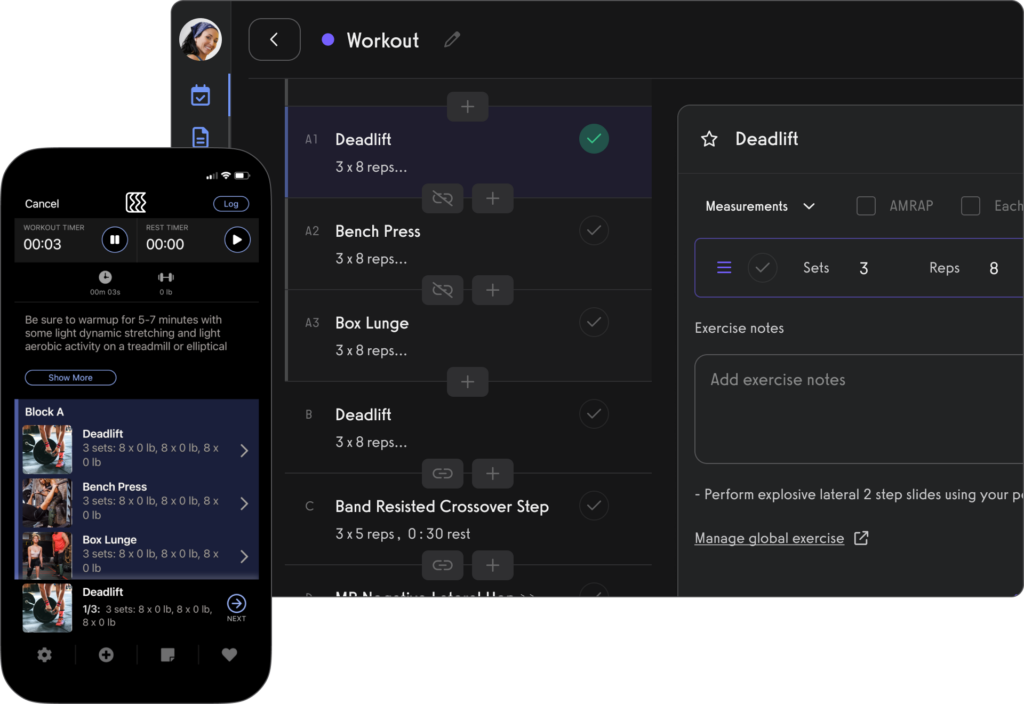
One of the key aspects of running a successful mobile fitness business is creating engaging and effective workout programs for your clients. These programs should be tailored to each individual’s goals, preferences, and fitness levels, while still being accessible and enjoyable.
When designing workout programs, begin by conducting thorough assessments of your client’s fitness levels, health history, and goals. This information will serve as a foundation for developing an individualized program that addresses their specific needs. Consider incorporating a variety of exercises and training modalities to keep sessions exciting and prevent plateauing.
Maintaining open and clear communication with your clients is essential throughout the program design process. Regularly check-in with your clients to assess their progress, provide feedback, and modify the program as needed. By keeping the lines of communication open, you can ensure that your clients are consistently challenged, motivated, and satisfied with their workouts.
Moreover, staying up-to-date with the latest fitness trends and research allows you to incorporate new and innovative exercises or training techniques into your programs. This not only keeps your workouts fresh and engaging but also positions you as a knowledgeable and cutting-edge fitness professional.
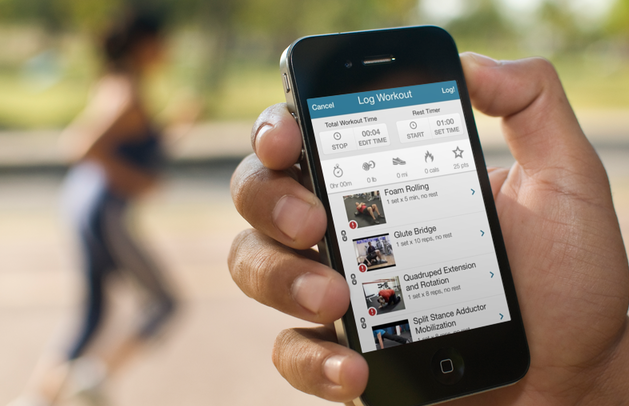
Be sure to get your own custom branded fitness apps on the Exercise.com platform.
Safety First: Ensuring the Well-being of Your Clients in a Mobile Setting
When operating a mobile fitness business, prioritizing the safety and well-being of your clients is paramount. Unlike a controlled gym environment, you will be faced with various external factors and potential hazards that need to be managed effectively.
First and foremost, ensure that you have adequate insurance coverage to protect yourself and your clients in case of any accidents or injuries. Liability insurance that specifically covers mobile fitness services can provide peace of mind and safeguard your business.
Before commencing any training sessions, conduct thorough client assessments to identify any existing health conditions or limitations they may have. This allows you to create customized programs that consider their individual needs and minimize the risk of injury. Moreover, educate yourself on appropriate modifications and alternative exercises for clients with specific conditions, such as back pain, joint issues, or pregnancy.
Prepare for outdoor sessions by assessing the environmental conditions and planning accordingly. Consider the weather forecast, potential hazards (such as uneven surfaces or excessive heat), and have a backup plan in case of adverse conditions. Additionally, ensure that communication devices, first aid kits, and emergency contact information are readily available during all sessions.
During sessions, prioritize proper form and technique to reduce the risk of injury. Regularly monitor your clients and provide accurate feedback and guidance to ensure they are performing exercises correctly and safely. Encourage open communication and create a safe space for clients to express any concerns or discomfort they may be experiencing.
Creating a Professional Image: Dressing and Presenting Yourself as a Mobile Fitness Professional
As a mobile fitness professional, your personal appearance and professionalism play a significant role in establishing credibility and attracting clients. While the setting may be less formal than a traditional fitness facility, it’s important to convey a professional image that instills confidence and trust in your clients.
Consider your attire carefully when working with clients. Aim for a balance between comfort and professionalism. Opt for athletic wear that is clean, well-fitted, and appropriate for the type of services you provide. Dressing neatly and wearing appropriate footwear not only enhances your own comfort and performance but also sets a positive example for your clients.
Aside from physical appearance, consistently exhibiting professionalism in your interactions is essential. Arrive on time for sessions, be well-prepared, and communicate clearly and respectfully with your clients. Demonstrate strong organizational skills and attention to detail in all aspects of your business, including scheduling, paperwork, and client record keeping.
Moreover, maintaining a positive and enthusiastic attitude creates a supportive and motivational environment for your clients. Show genuine interest in their progress, listen actively, and celebrate their achievements. By fostering a positive relationship with your clients, you can establish a strong rapport and encourage long-term commitment to your services.
Overcoming Challenges: Dealing with Weather Constraints and Other Obstacles in a Mobile Setting
Running a mobile fitness business comes with its fair share of challenges, one of the major ones being weather constraints. Unlike indoor facilities, mobile fitness professionals are exposed to various weather conditions that can impact their ability to conduct sessions or reach clients.
To overcome weather challenges, it’s important to have contingency plans in place. Monitor weather forecasts regularly and be prepared to reschedule or modify outdoor sessions if necessary. Design alternative indoor workout programs that can be executed in case of inclement weather. This not only ensures the safety and comfort of your clients but also demonstrates your adaptability and commitment to providing consistent services.
In addition to weather constraints, mobile fitness professionals may encounter other obstacles such as transportation issues or limited access to certain facilities or equipment. Planning ahead and having backup options helps mitigate such challenges. For example, consider having alternative routes mapped out in case of traffic congestion or carrying portable equipment that can be used in a variety of locations.
Flexibility and adaptability are key traits for overcoming challenges in a mobile fitness setting. By anticipating potential obstacles and having backup plans in place, you can ensure the smooth operation of your business.

Is it a good idea to start a mobile gym business?
Starting a mobile gym business can be a great idea due to the flexibility, low overhead costs, and the growing demand for personalized, convenient fitness services. By leveraging a comprehensive software platform like Exercise.com, you can easily manage clients, design workouts, schedule sessions, and process payments, making it easier to run a mobile fitness business effectively.
What are some creative mobile gym ideas?
Creative mobile gym ideas revolve around the concept of bringing fitness directly to the client, offering convenience and personalized service. These ideas leverage mobility to access a broader client base and can range from fully equipped trailers to specialized services focusing on specific workout regimes. Incorporating mobile fitness equipment, utilizing a mobile gym trailer or mobile gym truck, and offering mobile fitness coaching are key components of these innovative solutions. Here are some creative ideas:
- Mobile Fitness Truck: Transform a large truck into a mobile gym that can travel to different locations, parks, and events. Equip it with mobile gym equipment like foldable benches, free weights, resistance bands, and compact cardio machines. This setup can offer the versatility of a traditional gym with the added benefit of being on the move.
- Mobile Exercise Studio: A mobile exercise studio can specialize in classes that don’t require heavy equipment, such as yoga, Pilates, Zumba, or aerobics. The studio can be set up in a spacious trailer or modified bus, providing a unique environment for group workouts at various scenic locations.
- Mobile Personal Fitness Trainer: Offering mobile in-home personal training services, where the trainer brings necessary mobile fitness equipment to the client’s home or preferred location. This personalized approach can cater to clients who prefer privacy or have busy schedules that don’t align with traditional gym hours.
- Mobile Workout Trailer: Design a compact and efficient mobile workout trailer that can be easily towed to clients’ homes or public spaces. This trailer can be equipped with essential workout gear, offering a range of exercise options from strength training to cardio, all within a convenient setup.
How much does a mobile fitness center cost to build?
Building a mobile fitness center involves several key expenses, including the vehicle, retrofitting, and equipment. For a mobile fitness truck or mobile gym trailer, initial costs can range from a modest $20,000 for a basic setup to over $100,000 for a high-end, fully equipped mobile gym. The price varies based on the size of the vehicle, the complexity of the modifications, and the quality and quantity of mobile gym equipment. Opting for second-hand vehicles and equipment can significantly reduce costs.
How much should a mobile fitness trainer charge?
A mobile personal fitness trainer should consider travel time, equipment depreciation, and personalized service when setting rates. Charges can vary widely by location and specialization but generally range from $50 to $150 per session. Offering packages or monthly plans can provide value to clients and steady income for trainers. Incorporating mobile fitness coaching into the service offering can also justify premium pricing, especially for specialized training or niche fitness markets.
Where can I find a mobile gym trailer for sale?
To find a mobile gym trailer for sale, start by checking online marketplaces that specialize in commercial vehicles and trailers, such as Commercial Truck Trader or eBay Motors. Fitness industry-specific platforms and social media groups can also be valuable resources, offering both new and used options. Additionally, companies that specialize in custom mobile business solutions can provide tailored options to fit specific mobile fitness equipment and layout needs, though this may come at a higher cost.
What are some inexpensive mobile fitness studio ideas?
For those looking to start a budget-friendly mobile exercise studio, consider focusing on services that require minimal equipment, such as yoga, Pilates, or bodyweight fitness classes. Utilizing public spaces like parks or beaches can reduce costs associated with purchasing and maintaining a large vehicle. Investing in versatile and compact mobile fitness equipment like resistance bands, jump ropes, and yoga mats can offer a range of workout options without a significant upfront investment. Collaborating with local businesses or community centers for parking or event space can also help in reducing costs and increasing visibility.
What is the most important mobile personal trainer equipment to buy?
For a mobile personal fitness trainer, the most crucial equipment includes items that are versatile, portable, and can cater to a wide range of fitness levels. Key pieces might include adjustable dumbbells, resistance bands, a portable bench, kettlebells, a set of cones for agility drills, and yoga mats. These items allow for a variety of workouts, from strength training to flexibility and balance exercises, making them essential for mobile fitness training services.
How do I start my own mobile fitness business from scratch?
Starting a mobile fitness business from scratch involves several steps: 1) getting certified as a personal trainer, 2) defining your target market, 3) purchasing necessary equipment, 4) setting your pricing structure, 5) marketing your services, and 6) managing your business efficiently. A platform like Exercise.com can support you in managing your business, from client management and workout design to scheduling and billing.
Do I need a mobile fitness certification?
While a specific “mobile fitness certification” might not be a formal requirement, having a recognized certification in personal training or a specialized fitness area is highly recommended for anyone entering the mobile fitness industry. Certifications from reputable organizations ensure that you have the necessary knowledge and skills to provide safe and effective training. They also enhance your credibility and can make you more attractive to potential clients.
For mobile personal fitness trainers, certifications in CPR/AED, personal training, and any specialized areas of fitness you plan to offer (such as yoga, Pilates, strength training, or senior fitness) are crucial. Additionally, if you’re offering mobile fitness coaching or specialized services, certifications in those specific areas can further validate your expertise.
Moreover, staying informed about the latest fitness trends and continuing education can help you maintain a competitive edge. Insurance is another critical consideration, as it protects both you and your clients in case of any accidents or injuries during mobile fitness training sessions.
Read More:
How do I start a mobile fitness business with no money?
Starting a mobile fitness business with no money can be challenging but not impossible. Consider offering services that require little to no equipment, like bodyweight workouts or outdoor bootcamps. Market your services for free on social media or through word-of-mouth. Leverage free trial periods or low-cost plans of business management tools like Exercise.com to help you manage your clients, design workouts, and handle bookings and payments.
Read More: How to Start a Fitness Business With No Money
How do I become a mobile trainer?
Becoming a mobile trainer involves getting a personal training certification, defining your services, purchasing necessary equipment, and finding clients. You’ll need to be comfortable traveling to clients or meeting them at convenient locations. Tools like Exercise.com can make it easier to manage your business, from scheduling and billing to workout design and progress tracking.
How much does it cost to start a fitness app?
The cost to start a fitness app can vary greatly depending on its complexity and features. Developing a simple app can cost a few thousand dollars, while a more complex app can cost tens of thousands. However, a more cost-effective option could be to leverage a pre-existing platform like Exercise.com that provides a fully customizable app as part of its comprehensive fitness business software solution.
Read More: How much does it cost to start a fitness app?
How do I get my first clients for my mobile fitness business?
Getting your first clients can involve networking, offering free sessions or discounts, partnering with local businesses, or advertising on social media. Be sure to deliver exceptional service to encourage referrals. Exercise.com can help you manage your leads and clients, automate communication and marketing, and provide top-notch service to help you convert leads into clients.
Can I start a mobile fitness business without employees?
Yes, you can start a mobile fitness business without employees. As a solo entrepreneur, you would handle all aspects of your business, including training, scheduling, billing, and marketing. Tools like Exercise.com can streamline these tasks, making it feasible to run a mobile fitness business single-handedly.
How do I start a mobile personal training business side hustle?
Starting a mobile personal training business as a side hustle involves getting certified, defining your services, finding clients, and managing your time effectively. Be realistic about your availability and ensure your side hustle doesn’t conflict with your primary job. Exercise.com can support your side hustle by providing efficient solutions for client management, workout design, scheduling, and billing.
What is a mobile PT?
A mobile PT, or mobile personal trainer, is a personal trainer who travels to clients’ homes, offices, or other locations to provide personalized fitness training. This provides convenience for clients and flexibility for the trainer. Tools like Exercise.com can support a mobile PT in managing clients, designing workouts, scheduling sessions, and processing payments.
What is the average profit of a mobile fitness business?
The average profit of a mobile fitness business can vary greatly depending on factors like the number of clients, pricing, expenses, and the efficiency of the business management. By reducing overhead costs, maximizing client capacity, and managing your business efficiently with a platform like Exercise.com, you can increase your profit margin.
Read More: Most Profitable Fitness Business Models
How many members does a mobile fitness business need to be successful?
The number of clients needed for a mobile fitness business to be successful can vary based on your pricing, expenses, and income goals. It’s important to manage your time effectively and ensure you can provide quality service to all clients. Exercise.com can help manage client capacity and streamline business operations, helping to maximize profitability.
What are the pros and cons of a mobile fitness business?
Pros of a mobile fitness business include low overhead costs, flexibility, and the ability to provide personalized, convenient service. Cons might include travel time, scheduling challenges, and potential difficulty in creating a consistent client base. However, with strategic planning and efficient business management tools like Exercise.com, many of these challenges can be mitigated.










